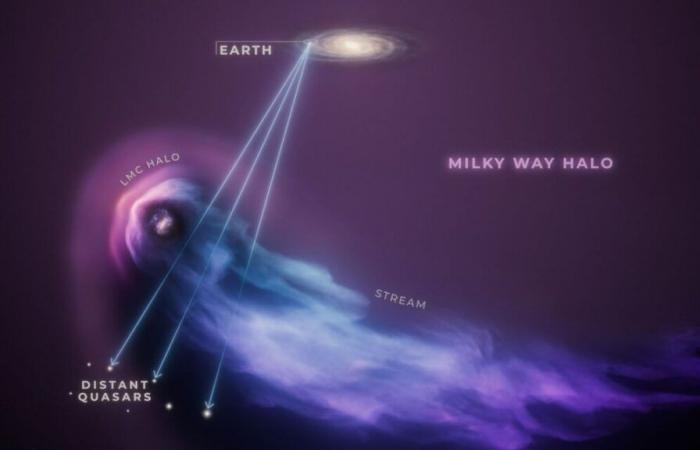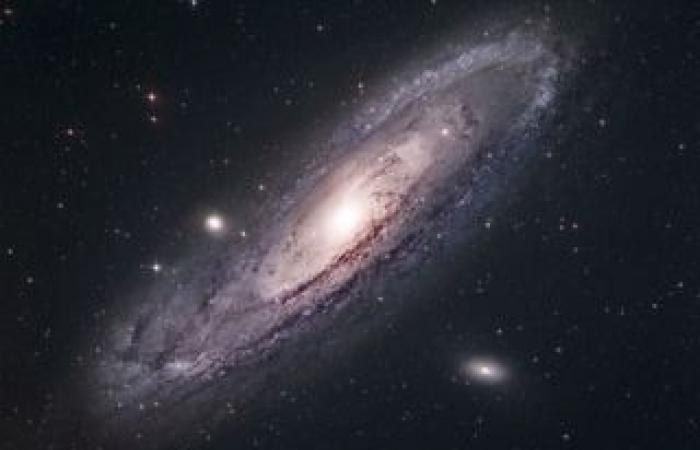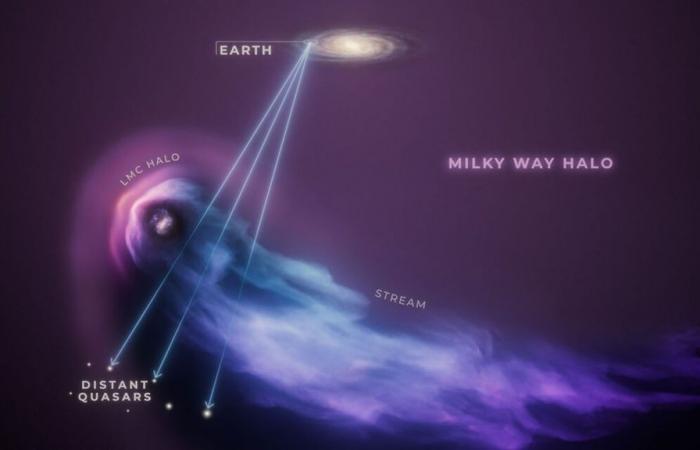The Large Magellanic Cloud, also called LMC, is one of the Milky Way’s closest neighbors. This dwarf galaxy rises above the southern night sky with an apparent diameter 20 times that of the full moon.
The Large Magellanic Cloud and its approach to the Milky Way
As reported by NASA en Español, many researchers put forward the hypothesis that the LMC is not in orbit around our galaxy, but that it only passes through it. These scientists believe that the LMC has just come closer to the much more massive Milky Way. This flyby caused most of the spherical halo of gas surrounding the LMC to disappear.
Today, for the first time, astronomers were able to measure the size of the LMC halo, something they could only do with Hubble. In a new study to be published in The Astrophysical Journal Letters, researchers were surprised to discover that the halo is extremely small, about 50,000 light years wide. This is about 10 times smaller than the halos of other galaxies with the mass of the LMC. Its compactness tells the story of its encounter with the Milky Way.
“The LMC is a survivor,” said Andrew Fox of AURA/STScI for the European Space Agency in Baltimore, who was the principal investigator of the observations. “Although it has lost much of its gas, there is enough left to continue forming new stars. Therefore, new star forming regions can still be created. A smaller galaxy wouldn’t have lasted – there would be no gas, just a collection of aging red stars.
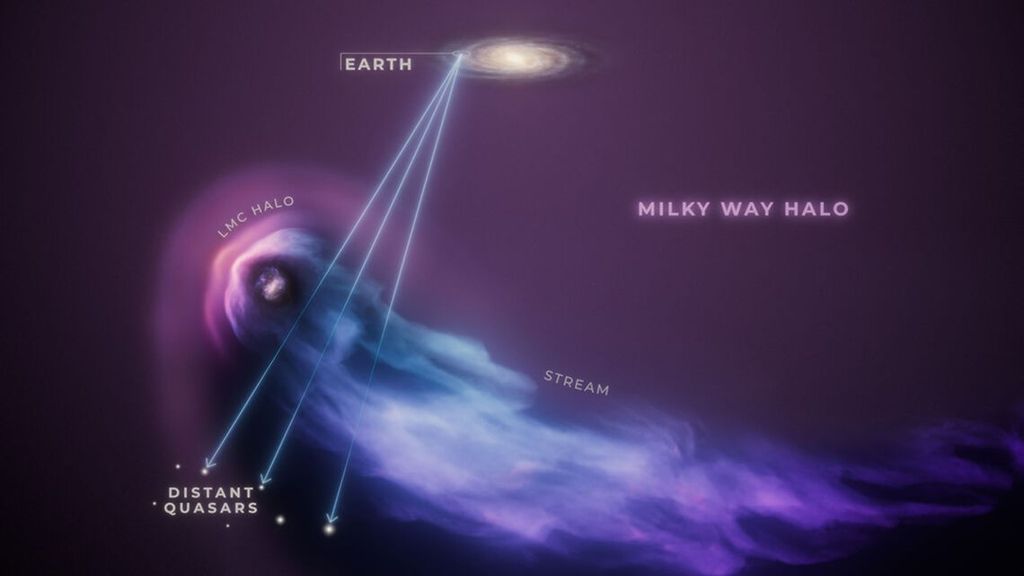
Although very decomposed, the LMC still retains a compact and short halo of gas, which it would not have been able to maintain by gravitation if it had been less massive. The mass of the LMC is about 10% of that of the Milky Way, making it heavier than most dwarf galaxies.
“Due to the gigantic halo of the Milky Way itself, the gas in the LMC is being truncated or extinguished,” explained Sapna Mishra of STScI, lead author of the paper reporting the discovery. “But even with this catastrophic interaction with the Milky Way, the LMC is capable of retaining 10% of its halo due to its high mass.”
Most of the CML halo has come off due to a phenomenon called dynamic pressure skimming. The Milky Way’s dense environment pushes the approaching LMC and creates a trail of gas that follows the dwarf galaxy, like the tail of a comet.
“I like to think of the Milky Way as a giant hairdryer, and it expels gas from the LMC as it gets closer to us,” Fox said. “The Milky Way is pushing back with so much force that dynamic pressure has removed most of the original mass from the LMC halo. There is only a little left, and it is this small, compact remnant that we are observing now.”
As dynamic pressure pushes out much of the LMC’s halo, the gas will slow down and eventually fall onto the Milky Way. But as the LMC has just passed its closest point to the Milky Way and is moving away again towards deep space, scientists don’t expect all of the halo to be lost.
To carry out this study, the research team analyzed ultraviolet observations from the Mikulski Archive for Space Telescopes at STScI. Most ultraviolet light is blocked by Earth’s atmosphere, so it cannot be observed with ground-based telescopes. Hubble is the only current space telescope tuned to detect these wavelengths of light, making this study possible only with Hubble.
The team examined the halo using background light from 28 bright quasars. Quasars, the brightest type of active galactic core, are thought to be powered by supermassive black holes. Shining like lighthouses, they allow scientists to “see” the intermediate halo gas indirectly through the absorption of background light. Quasars reside throughout the universe at extreme distances from our galaxy.
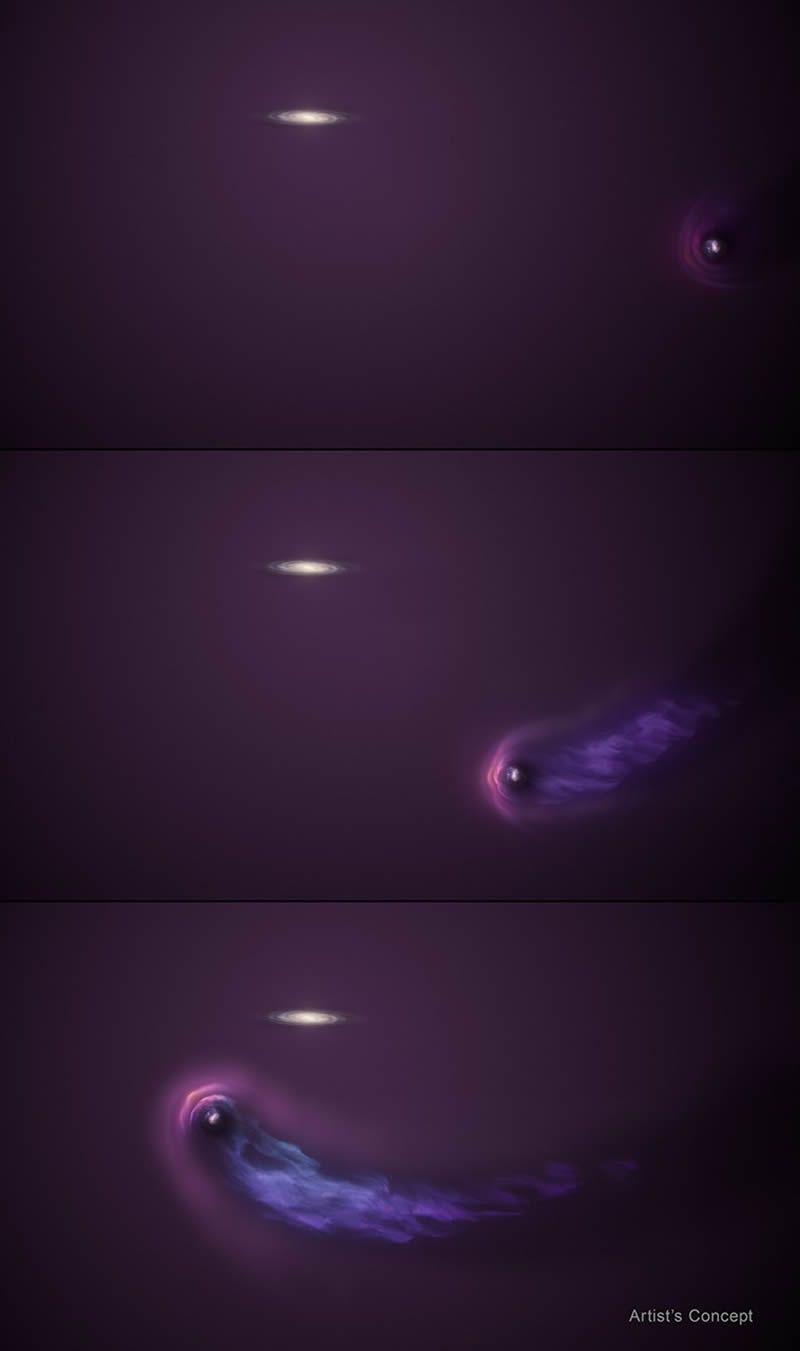
Due to its mass and proximity to the Milky Way, the LMC is a unique astrophysical laboratory. Observing the LMC’s interaction with our galaxy helps scientists understand what happened in the early universe, when galaxies were closer together. It also shows how messy and complicated the process of galactic interaction is.

